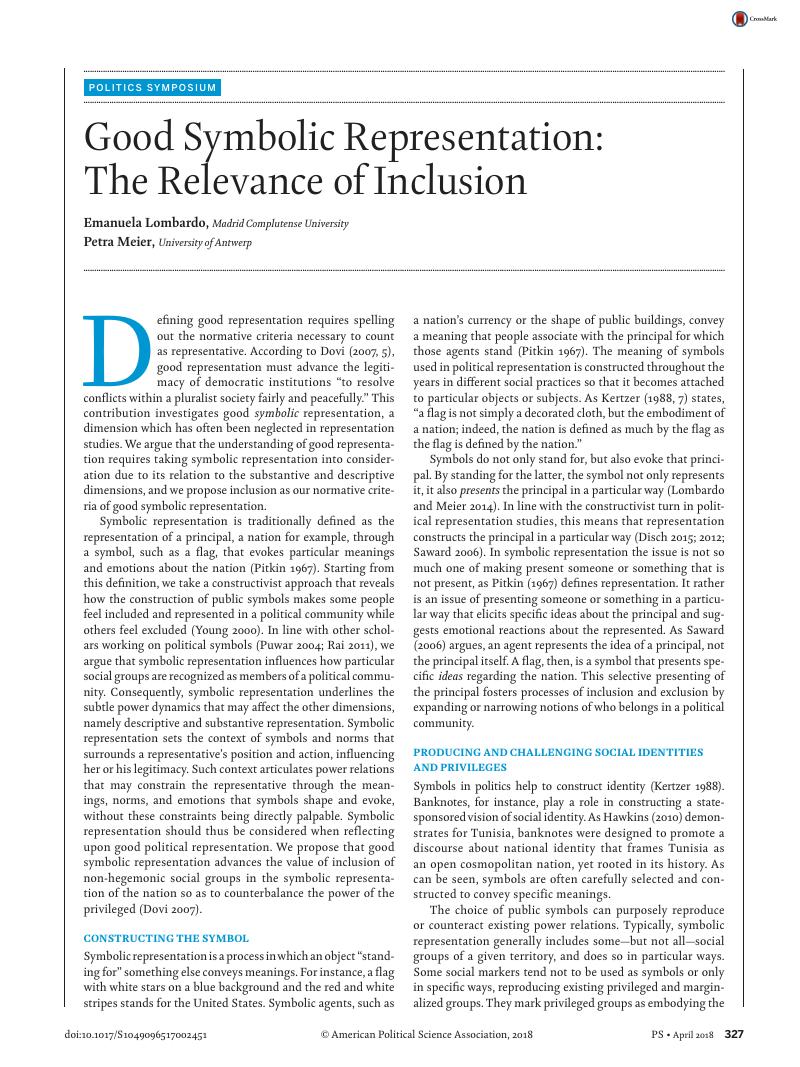Crossref Citations
This article has been cited by the following publications. This list is generated based on data provided by Crossref.
Lombardo, Emanuela
and
Meier, Petra
2019.
The Significance of Symbolic Representation for Gender Issues in Politics.
NORA - Nordic Journal of Feminist and Gender Research,
Vol. 27,
Issue. 4,
p.
231.
Fitzpatrick, Daniel
and
Richards, David
2019.
The civil service’s gender diversity agenda under the coalition: where have the critical feminist actors gone?.
British Politics,
Vol. 14,
Issue. 2,
p.
198.
Judge, David
and
Leston-Bandeira, Cristina
2021.
Why it matters to keep asking why legislatures matter.
The Journal of Legislative Studies,
Vol. 27,
Issue. 2,
p.
155.
Davis, Claire
and
Edge, Sara
2022.
Strengthening Equity and Inclusion in Urban Greenspace: Interrogating the Moral Management & Policing of 2SLGBTQ+ Communities in Toronto Parks.
International Journal of Environmental Research and Public Health,
Vol. 19,
Issue. 23,
p.
15505.
Gutiérrez-Mora, Dolores
and
Oto-Peralías, Daniel
2022.
Gendered cities: Studying urban gender bias through street names.
Environment and Planning B: Urban Analytics and City Science,
Vol. 49,
Issue. 6,
p.
1792.
Gilas, Karolina Monika
2022.
¿Cómo evaluar la representación simbólica de género?.
Revista Elecciones,
Vol. 21,
Issue. 23,
p.
213.
Knops, Louise
2023.
Towards an Affective Turn in Theories of Representation: The Case of Indignation.
Representation,
Vol. 59,
Issue. 2,
p.
271.
Guerra, Simona
2023.
Studying the EU and its Pioneers.
Politique européenne,
Vol. N° 78,
Issue. 4,
p.
104.
De Mulder, August
2023.
Making Sense of Citizens’ Sense of Being Represented. A Novel Conceptualisation and Measure of Feeling Represented.
Representation,
Vol. 59,
Issue. 4,
p.
633.
Stockemer, Daniel
Gallant, Kaitlin
and
Tolley, Erin
2024.
Limited supply: Youth underrepresentation in the Canadian House of Commons.
Electoral Studies,
Vol. 88,
Issue. ,
p.
102747.
Coe, Cati
and
Conty, Sheridan
2024.
Images of care: A pedagogy of rosiness about aging transitions.
Journal of Aging Studies,
Vol. 68,
Issue. ,
p.
101213.
De Mulder, August
Gevers, Ine
and
Poljak, Željko
2025.
Who Deserves Representation, and When? Unpacking the Temporal Dynamics of Politicians’ Claims of Representation on Social Media.
Political Studies,



